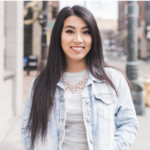 I wanted a high-quality education, and I found it at a South Seattle public school
I wanted a high-quality education, and I found it at a South Seattle public school
I spent a decade of my life in private schools for various reasons, including my family’s religion and my parents’ belief that the public school system was unsafe and of poor quality. But it wasn’t until I transferred into a Seattle public high school that I realized the definition of “better education” is very subjective.When I was accepted into Holy Names Academy, an all-girls private high school, it seemed like a dream come true. My parents had shelled out thousands of dollars to pay for my K-8 schooling, and we all thought I would continue to get a very high-quality education.
In the weeks that followed, I was bullied because I did not dress the way the other girls did. They didn’t know I could not afford the latest fashion trend. I wore secondhand clothes from thrift stores because my parents were more concerned about providing food on the dinner table than about what I wore to school. I also was bullied because I had a slight accent, and other students did not admire my ability to speak two Filipino dialects.

Rhea Panela transferred to her South Seattle neighborhood’s public high school, Franklin, after years of private schooling. Looking back, this University of Washington senior says she’s all the better for it
There was no doubt Holy Names Academy had high standards of education. As a first semester freshman, I was placed into a math course usually not taken until junior year at other high schools. The number of textbooks I carried around and the money I paid for them was equal to the cost of the books for my first quarter at college. But I felt the education I received at Holy Names was Eurocentric and the environment offered little opportunity for students to express their cultures. Franklin High School, where I transferred after my freshman year, prepared me better for college than Holy Names would have.
I am Filipina, and I call South Seattle home, a place with crowded Asian markets selling tropical fish, Vietnamese Pho restaurants, cultural fairs, and alleys behind pawn shops and gas stations where illegal deals are made at night. Franklin High is nestled in the middle of my neighborhood, and its students are mostly Asian-American and black. Holy Names, on the other hand, was tucked away in a quiet, residential neighborhood in Capitol Hill, and has a majority of white students.
Franklin also offered programs that Holy Names didn’t. In addition to teaching French, Spanish, Japanese, and Mandarin Chinese, for example, Franklin had an English Language Development program for bilingual students to work on their English speaking and writing skills so they could transition into regular classes.
Franklin and the University of Washington, where I’m now studying, also have many more cultural student organizations than Holy Names did. At Franklin, I joined the Filipino Club and served as its secretary during my senior year. The club consisted mostly of first-generation Americans who had immigrated from the Philippines and the club adviser was a Filipino immigrant himself. Thanks to a referral from him, I was awarded two scholarships from the Filipino American Educators of Washington (FAEW) during the annual Filipino Pagdiriwang Festival at the Seattle Center in 2013.
The diversity of students at Franklin gave me opportunities to learn about other cultures. When Trayvon Martin was shot in Florida, for example, Franklin students walked out and marched, and we all learned how his death affected African-American students personally.
Because of all this, I support the effort to require ethnic studies classes in Seattle schools, with teachers like Garfield High’s Jesse Hagopian arguing that he wants schools to provide students with the opportunity to learn about their own cultures.
Franklin prepared me for college academics, too. I took part in the UW Upward Bound Program, a college preparatory program for low-income, first-generation college students.
I am still glad I attended my private K-8 Catholic school, St. Edward. I appreciate the strict guidance and good moral teachings it offered. And because that school was also in the Rainier Valley, it was just as multicultural as Franklin High.
But Franklin was the right high school for me — one that taught me the values and principles I needed to thrive in a diverse community.
While my first year of high school at Holy Names was a traumatizing culture shock, I believe it was a necessary wake-up call. In order to be accepted by others for my cultural identity, I first needed to accept it myself.
As I near the end of my undergraduate education at UW, my definition of a good education now stretches well beyond a school’s financial resources and rests on its will to cultivate and encourage cultural curiosity in the classroom.
Rhea Panela is majoring in journalism, and minoring in English and diversity at the University of Washington. She is pursuing a career in broadcast journalism to shed light on the issues and success stories in communities of color.
